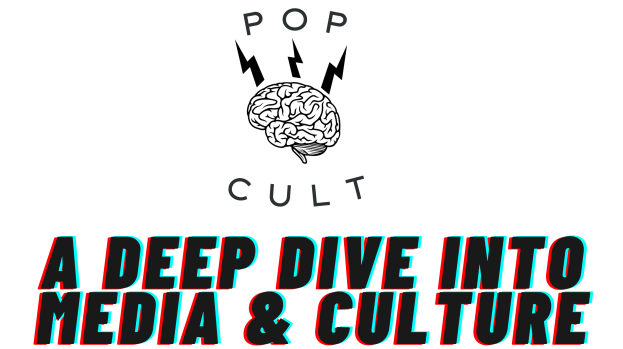Young Peter Parker, high school science whiz, is bitten by a radioactive spider and gains the relative strength of a spider, as well as at the ability to scale walls and a “spider-sense”. Using his scientific expertise, he constructs web shooting gauntlets. At first, he uses these powers to make money as an amateur wrestler, but after a judgment he makes causes the death of his Uncle Ben. Living true to the motto of “With great power, comes great responsibility”, Peter becomes Spider-Man, fighting crime while being vilified by his employer, The Daily Bugle. You know the basic origin, so lets get into some of the details, shall we?
Early on, Peter juggled high school, work as a photographer for The Daily Bugle, and Spider-Man. J. Jonah Jameson, the Bugle’s publisher took a particular relish in vilifying the webcrawler. Peter pressures himself to bring home his share of money for his widowed Aunt May, while she attempts to set him up with the neighbor’s niece, Mary Jane Watson. Not wanting to be set up, Peter avoids this for awhile (multiple years in our time). Some of Spidey’s early villains were The Chameleon, The Vulture, The Sandman, Doctor Octopus, Electro, Mysterio, Kraven the Hunter, and of course Green Goblin. Peter also dated Betty Brant, J.J.’s secretary in his senior year of high school, but eventually fell for Gwen Stacy once he got into college. A major turning point in Peter’s life revolved around Gwen, an event that would change him forever.
The Green Goblin had figured out that Spider-Man and Peter Parker were the same person, while Spidey was unaware of who the Goblin was. To hit Spider-Man deep, he kidnapped Gwen and held her captive atop the George Washington Bridge. The two men battled and Gwen plummeted off the bridge. Spidey dives, firing a web to catch her leg, but the jolt of the web’s tug causes Gwen’s neck to jerk back and snap, killing her. Enraged, Spider-Man hunts the Goblin down and in the process of the battle, the villain is impaled on his own glider. During his grieving period, Spider-Man is secretly cloned by one of his professors, and battles himself, as well as is tricked by a clone of Gwen. Peter believes his clone is dead, but the clone lives, taking the name Ben Reilly and leaves NYC for the next few years. Peter finds himself in the arms of Mary Jane Watson and the two become inseparable for a long time.
Aftre graduating from college, Peter becomes involved in a secret war on the moon between Marvel’s top heroes and villains, organized by a being called The Beyonder. While on the moon, Peter ditches his red and blue duds, for a sleek black and white costume which he is unaware is a living organism, a symbiote that enhances Peter’s powers but also increases his rage. Back on Earth, Peter is becoming increasingly violent and gets help from Mr. Fantastic to separate himself from the symbiote. Peter returns to normal, but the symbiote eventually escapes its containment, and finds Eddie Brock. Brock was a reporter for the Daily Bugle who has falsified facts in an effort to break a big story. He gets caught in the lie by Spider-Man, and Brock grows to hate the hero. The symbiote detects this hate and merges with Brock to become Venom. Venom plagues Spider-Man with a cannibalistic brutality, but eventually creates his own nemesis by accident, the even more brutal Carnage.
Peter and Mary Jane get married, but their happiness is short lived when Ben Reilly, his clone returns to his life. It turns out there were a few clones made, including Kaine, a violent version of Peter who uses his sticky wallcrawler hands to tear the skin off people’s faces. Spider-Man battles his evil clone and eventually Ben takes up the identity of the Scarlet Spider. The Scarlet Spider’s career is cut short when he is suddenly and brutally killed by the original Green Goblin, returned from the dead. As a way to strike at the core of Peter, The Goblin aka Norman Osborn causes Mary Jane to believe she miscarries, while he actually kidnaps the child to raise as his own. Life continued down this bleak path, with M.J. and Peter separating, Aunt May taking ill many times, and Peter struggling to maintain his personal life. The Kingpin learns of Spider-Man true identity while imprisoned and hired a hitman to take Parker out. Instead the bullet hits Aunt May and Peter searches for help from heroes like Doctor Strange and Iron Man.
Mephisto, Marvel’s version of the Devil, appeared to Peter and MJ with a deal. Aunt May would be saved if Peter allowed his life with MJ and the memories of it to be taken. Peter refused to make such a deal, but MJ agreed to it, knowing Peter would be heartbroken if Aunt May died. In a flash, their marriage was gone, Peter was a high school chemistry teacher, still photographing for The Daily Bugle and MJ had left New York years ago. J. Jonah Jameson has won the election to become the mayor of New York City, while Norman Osborn achieved the highest level of power in American defense.
All of Spidey’s enemies have evolved over the years as well, most tragically The Lizard, who was Peter’s mentor Dr. Curt Conners, has submitted to his mutation and devolved permanently into a mindless reptilian creature. Most recently, Peter has been hunted by the vengeful Kravinoff family, the heirs of Kraven the Hunter. They have killed and tortured characters whose powers are related to spiders (Spider-Woman, Arana, Madame Web) to lure Peter into a trap. He was even reunited with Kaine, his surviving clone along the way. It culminated in the ressurrection of the dead Kraven and a massive battle with Spider-Man. In the end the Kravinoffs failed and were driven out of NYC. Kaine sacrificed himself to save Spidey and the adolescent Arana became Spider-Girl.





























